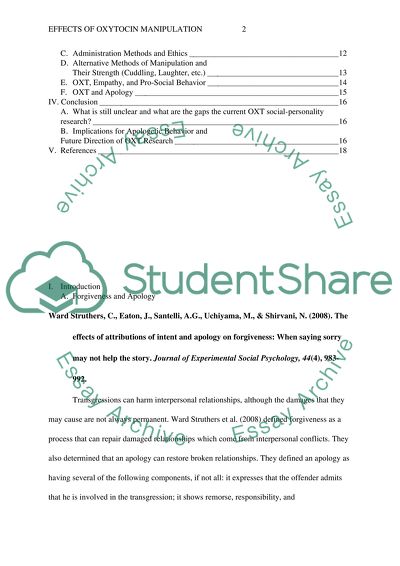Cite this document
(“Apology and Forgiveness: Empathy, Oxytocin, and the Dark Triad Annotated Bibliography”, n.d.)
Apology and Forgiveness: Empathy, Oxytocin, and the Dark Triad Annotated Bibliography. Retrieved from https://studentshare.org/psychology/1673076-apology-and-forgiveness-empathy-oxytocin-and-the-dark-triad
Apology and Forgiveness: Empathy, Oxytocin, and the Dark Triad Annotated Bibliography. Retrieved from https://studentshare.org/psychology/1673076-apology-and-forgiveness-empathy-oxytocin-and-the-dark-triad
(Apology and Forgiveness: Empathy, Oxytocin, and the Dark Triad Annotated Bibliography)
Apology and Forgiveness: Empathy, Oxytocin, and the Dark Triad Annotated Bibliography. https://studentshare.org/psychology/1673076-apology-and-forgiveness-empathy-oxytocin-and-the-dark-triad.
Apology and Forgiveness: Empathy, Oxytocin, and the Dark Triad Annotated Bibliography. https://studentshare.org/psychology/1673076-apology-and-forgiveness-empathy-oxytocin-and-the-dark-triad.
“Apology and Forgiveness: Empathy, Oxytocin, and the Dark Triad Annotated Bibliography”, n.d. https://studentshare.org/psychology/1673076-apology-and-forgiveness-empathy-oxytocin-and-the-dark-triad.


